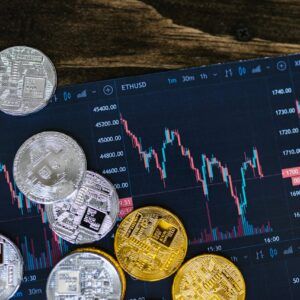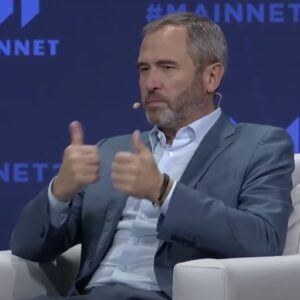In an analysis by Kitco News on February 19, the dynamics of the gold and silver markets were explored, revealing a complex interplay between inflation fears, hedge fund strategies, and speculative bets. Despite the challenges, both precious metals have shown remarkable resilience, holding critical support levels even as the broader commodity space faces speculative outflows, particularly in gold, as highlighted by commodity analysts at Société Générale.
Kitco News cited the latest trade data from the Commodity Futures Trading Commission (CFTC), which indicated a significant shift in the gold market. Kitco says that according to the CFTC’s disaggregated Commitments of Traders report for the week ending February 13, there was a notable decrease in speculative gross long positions in Comex gold futures, coupled with an increase in short positions. This shift has brought bullish speculative positioning in gold to its lowest level since October 16.
Despite this bearish momentum, Kitco pointed out that gold prices have continued to hold above the critical $2,000 support level. This resilience comes in the wake of the U.S. Labor Department’s report, which showed a higher-than-expected rise in the Consumer Price Index (CPI), fueling renewed inflation fears and adjusting market expectations regarding Federal Reserve rate cuts.
J.P. Morgan Wealth Management’s review of the January 2024 CPI report shows that the U.S. economy continues to face challenges as it recovers from the pandemic’s disruptions. While recent data signals a slowdown from the high inflation of 2022, it also indicates further potential hurdles in reaching the Federal Reserve’s 2% inflation goal.
A slight uptick in the monthly CPI (up 0.3%), fueled primarily by a rising shelter index, could push the Federal Reserve to keep interest rates high for longer than initially anticipated. Food costs also continued to climb in January (0.4% increase), showing lingering pressures on prices for groceries and restaurant meals. The energy sector offered some respite, with gasoline costs contributing to a 0.9% decrease in energy prices overall.
Core CPI (excluding unstable food and energy prices) also rose by 0.4% in January. Although the annual all-items CPI decreased slightly compared to December (down to 3.1%), the core CPI year-over-year increase (3.9%) suggests a potentially complex fight to rein in broader inflation.
J.P. Morgan sees rising rents as a possible temporary surge, expecting a future slowdown. However, they acknowledge how time delays in how the CPI tracks housing costs add complexity to evaluating the current inflation picture.
Food inflation’s persistence, especially for home-cooked meals, presents a unique challenge for policymakers, exemplifying the lingering influence of pandemic-related price increases.
Markets reacted to the January data by scaling back prior expectations for aggressive interest rate cuts in 2024. J.P. Morgan highlights how the potential rate cuts anticipated, which at one point totaled seven, now likely sit between three to five, depending on upcoming core inflation data. The recent figures from the CPI point towards a likely hold on immediate rate cuts by the Fed, with a possible change coming as early as June.
Kitco also shared insights from Ole Hansen, head of commodity strategy at Saxo Bank, who emphasized the market’s anticipation of future U.S. rate cuts and its impact on gold and silver prices. Hansen suggested that robust Asian demand, particularly from China, continues to support the market, providing a “soft floor” under gold prices despite lackluster Western investment demand.
Further, Kitco News reported on the potential for a short squeeze in the gold market, as analyzed by commodity analysts at TD Securities. They highlighted the asymmetrical setup ripe for a material short squeeze, driven by macro traders’ under-positioning for the Federal Reserve’s easing cycle. This scenario suggests a shift from algorithmic selling exhaustion to buying activity, adding pressure on macro trader shorts.
Silver’s market dynamics were also discussed in Kitco’s report, noting the metal’s struggle amid potentially higher-for-longer interest rates and its impact on market sentiment. Despite bearish positioning, silver prices have managed to hold critical support at $22 an ounce, bouncing off a three-month low to achieve nearly a 7% gain last week.
Featured Image via Unsplash









